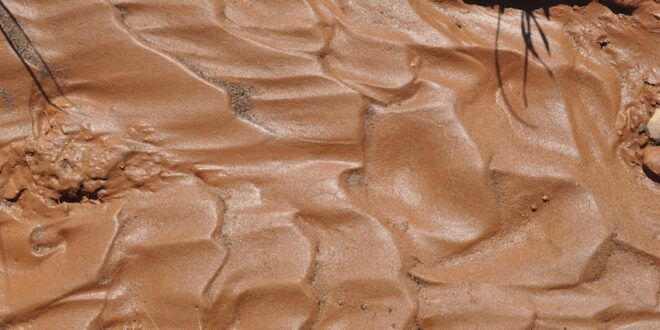Gardeners don’t get to choose their natural soil structure, but they do get to modify it. In fact, it’s what gardening is all about – turning what nature has given you, into the garden of your dreams! For gardeners faced with heavy clay, creating this dream can feel like an uphill battle. That’s why we’re introducing you to 3 tried and true garden additives to make the job do-able:
Gypsum
Spot it on the garden centre shelves, and gypsum looks like any old white powder, but in the right conditions, this soft mineral has the power to break down clay. Gypsum works its magic by binding together small particles of clay, creating space for water to drain through, and air to enter. The usual way to use gypsum is to apply it to new ground, as a powder, at a rate of 1/2 a kilo per square metre of soil, dug into the ground to a depth of 10-15cm. Gypsum isn’t fast acting, and it should only be applied once a year.
For all it’s positives, gypsum does have its drawbacks (it’s known to leach nutrients out of the ground), so before you head out to purchase some, be very sure your garden actually requires it. A good test as to whether ground is predominantly clay, is to squeeze fragments of the ‘soil’ together in your hand. If they squash down tightly, and don’t break apart when you release your grip, it’s a sign you’re dealing with clay, and gypsum could be helpful.
Compost
Clay gets a bad rap among gardeners, but it actually has a lot going for it (certainly a lot more than sandy soils). Clay is often full of helpful plant nutrients because the dense nature of its structure means these ‘goodies’ haven’t had an opportunity to leach away. Clay also holds onto moisture in a drought. What clay does lack, however, is the ability to drain and admit air (both vital for root growth). It’s also very hard to dig and break up – unless you allow your plants to do this for you, with their roots. To encourage plants to break up clay, spread a layer of 10-15cm of compost (it should include well-rotted animal manure) onto what will become your garden bed. Plant and sow into this layer the sort of ornamentals and vegetables that will be in the soil for several months (avoid root vegetables as the clay will be too hard for the likes of carrots and beetroot to penetrate). Suitable plants include annual flowers, garlic, brassica (cauli, cabbage and broccoli), silver beet, broadbeans, celery, and leeks). These plants will grow vigorously because of the nutrient rich compost. As they do, their roots will penetrate down into the clay layer in search of moisture, breaking up the soil as they go. Where possible, leave the roots in the ground when you harvest. As they decompose, they will create pockets to help the clay drain and air to enter.
Leaf mould mulch
Leaf mould is an organic soil additive that works to break up clay. It does this by encouraging microorganisms and worms into the garden environment. These small creatures then tunnel down into the clay, opening it up for drainage to occur. To use leaf mould, spread it over the garden, in autumn or winter, to a depth of 10-15cm. If it is light, cover it with a net (the sort you would use to cover strawberries) to prevent it being blown away or scratched up by foraging birds. Peg the net down with short hoops of number 8 wire, or a few bricks. You can make your own leafmould, and now is the very time to do it, when autumn leaves are plentiful.
A clay start to a garden may not be perfect, but it holds plenty of opportunity when you know how to take advantage of it!










Join the Discussion
Type out your comment here:
You must be logged in to post a comment.